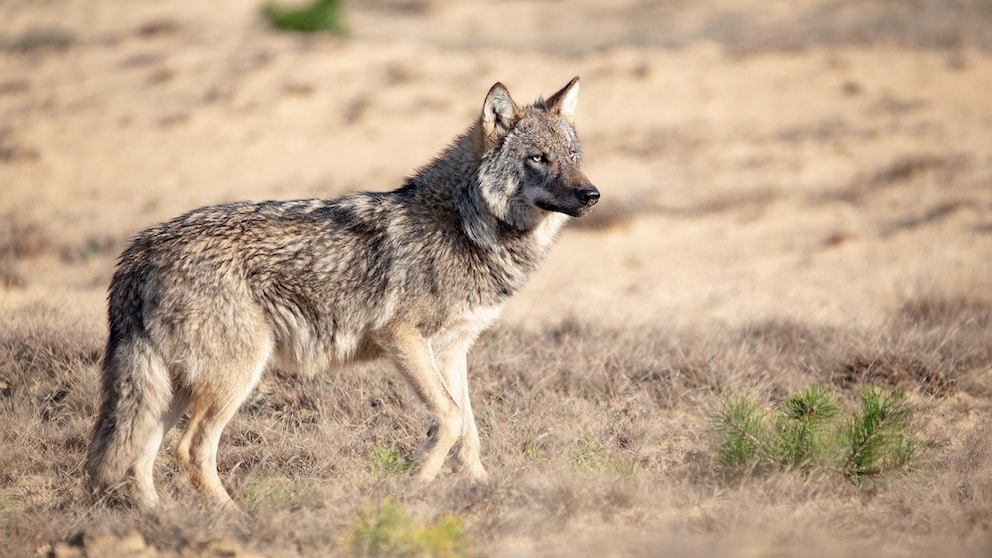February 3, 2025, 9:26 am | Read time: 3 minutes
Who’s that sneaking through the forest? Narrow snout, gray-brown fur, bushy tail: it must be a wolf! Or is it more likely to be a jackal? PETBOOK explains how to tell jackals, coyotes, and wolves apart.
Biologists group large wild dogs that share various characteristics, such as long legs and a bushy tail, together in the wolf and jackal species. But what are the differences between the jackal, coyote, and wolf? And how can you recognize the animals?
Are Coyotes and Jackals the Same Thing?
The surprising answer is not exactly. Coyotes are native to North America and resemble smaller wolves. From Canada to Costa Rica, they inhabit a variety of habitats, including dense forests and open prairies. Their primary prey includes mice and hares, as well as snakes, opossums, and birds. The character Wile E. Coyote, known for his (unsuccessful) attempts to catch the Road Runner, is featured in the animated series Looney Tunes, which also popularized Bugs Bunny.
Jackals are small, wolf-like wild dogs. The best-known species include the golden jackal, the striped jackal, and the black-backed jackal. Unlike the coyote, they are native to the Afro-Asian region. However, as the coyote has many similarities to jackals in both appearance and behavior, it is sometimes called the “American jackal”1
What Is the Difference Between Wolves and Coyotes?
Wolves and coyotes are closely related, a fact reflected in the coyote’s alternative names: prairie wolf or steppe wolf. Wolves and coyotes are distinct species, yet both belong to the biological genus that includes wolf and jackal-like animals. However, the wolf is significantly larger: it is the largest predator in the dog family and has a large distribution area. Like the coyote, it can also be found in North America2
The coyote, on the other hand, is somewhat smaller. In relation to its body, it has a narrower, longer snout than the wolf and slightly shorter legs. The coyote is also characterized by its longer and bushier tail, which usually hangs towards the ground. Wolves usually carry their tails a little higher. Despite these physical differences, it is sometimes not so easy to tell the two species apart at first glance. Especially in the cold season, when the coyote wears its thick winter coat, it can easily be mistaken for its larger relative, the wolf3

Hardly anyone knows these 16 wild cats

Raven or crow? How to recognize the difference

Beetles That Look Like Small Gold Coins? A Biologist Expalins the Effect
What Is the Difference Between Jackals and Wolves?
Due to the close relationship between the two species, even experts sometimes have problems distinguishing between wolves and golden jackals. The latter originally came from the Middle East and Asia but have been migrating to Europe for some time. The first animal was sighted in Germany in 1998. As wolves and golden jackals occupy a similar biological niche, they compete with each other in this country.
Golden jackals are most easily recognized by their characteristic golden yellow fur. However, their fur can also be gray, depending on the habitat. In this case, the risk of confusion with the wolf is particularly high. Other distinguishing features are the ears: Those of the golden jackal are smaller and light-colored on the back. The wolf, on the other hand, can be recognized by its dark shoulder fur, also known as the saddle patch4

